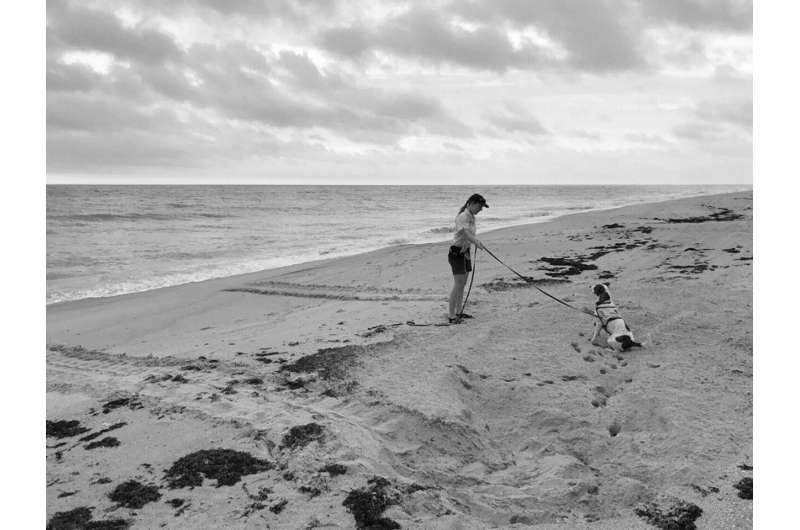September 15, 2023 report
This article has been reviewed according to Science X's editorial process and policies. Editors have highlighted the following attributes while ensuring the content's credibility:
fact-checked
peer-reviewed publication
trusted source
proofread
Using a scent-detecting dog to find sea turtle eggs

A trio of conservationists from Disney's Animals, Science and Environment, the Canine Academy Inc. and Pepedogs, Inwater Research Group, Inc. has found that a terrier named Dory is better at finding sea turtle eggs in nests than humans. For their study, reported in the open-access journal PLOS ONE, Rebekah Lindborg, Pepe Peruyero and Blair Witherington used the dog to monitor sea turtle nests along a five-mile stretch of Vero Beach in Florida.
Prior research has shown that many species of sea turtles are at risk of survival due to a variety of causes, one of which is loss of land for nest-building. Sea turtles dig holes in the sand by the seashore to build nests into which they lay their eggs. The turtles that hatch in the nests must then make their way to the sea and overcome a myriad of hurdles to survive.
Over the past several years, conservationists around the globe have been working to protect sea-turtle nests, hoping to improve their odds of survival. Conservationists must first find the eggs in their nests, which can be difficult. The usual method is to follow the tracks of the turtle that made the nest as it crawled out of the sea and then back to the ocean.
Unfortunately for the conservationists, the turtles have learned to make several false trips to prevent predators from finding their eggs. In this new effort, the research team used a dog trained to sniff out the eggs and found that it did a better job than the humans.
The dog, a stray, had been found along a highway in Florida. It was believed to be a mix of terrier breeds, which are known for tracking creatures that make nests in holes in the ground. After several months of training at a test site, Dory was deemed ready to help find real turtle eggs in real nests. She was pitted against human nest seekers, with the humans searching some days and the dog other days, along the same stretch of beach.
At the conclusion of the competition, Dory was found to have discovered 560 nests while the humans found only 256, though the researchers acknowledge that Dory worked more days. Still, they suggest, she was a better finder. She was much better, they note, at choosing where to dig to look for a nest, which reduced the workload. She was also less likely to fail at finding the eggs in a known nest. And she was better at finding the eggs laid by loggerhead turtles, which are more difficult to find because the huge turtles disturb such a large parcel of sand around their nests.
More information: Rebekah J. Lindborg et al, Use of a scent-detection dog for sea turtle nest monitoring of three sea turtle species in Florida, PLOS ONE (2023). DOI: 10.1371/journal.pone.0290740
Journal information: PLoS ONE
© 2023 Science X Network




















